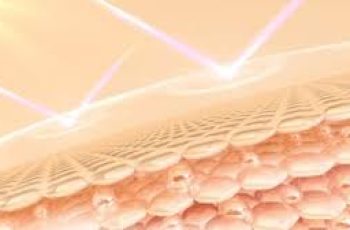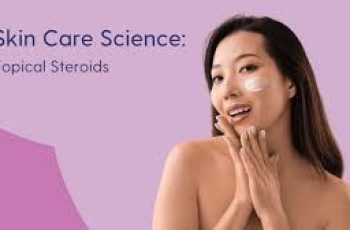
Ferulic Acid in Skin Care
Ferulic acid is a compound with anticarcinogenic, antioxidant, and photoprotective qualities. It is found mainly in serums, but you can see all of our ferulic acid products here!
It is derived from many different plant species, as it is a nearly omnipresent naturally occurring chemical in common fruits and vegetables.
Ferulic acid is used in many skin care products designed for photosensitive or UV damaged skin.
A lot of research supports the use of ferulic acid as an antioxidant, and it seems to be most effective within specific temperature and pH conditions. (27)
Read below to find out all about the properties and uses of ferulic acid in skin care!
What is ferulic acid
4-hydroxy-3-methoxycinnamic acid, also known as ferulic acid, makes up plant cell walls. (4-8)
People ingest ferulic acid regularly through their diets because it is a key component of most fruits and vegetables. It is considered a significant antioxidant and is one of the countless reasons vegetables are so good for you! (21)
It can be found in various fruits, grains, and vegetables like: (1,5,8,9)
Asparagus
Barley
Eggplants
Grapes
Oats
Olives
Pineapples
Spinach
Tomatoes
Because ferulic acid is harvested as a byproduct of general agriculture, it is a cheap and common ingredient in many skin care products. Here are some of my favorites:
Chemistry
Ferulic acid is part of a family of “polyphenolic” compounds called hydroxycinnamic acids which are common in skin care. (6,11,18)
Some other hydroxycinnamic acids in skin care are caffeic, p-coumaric, p-hydroxycinnamic, and sinapic acids.(5)
Ferulic acid has been shown in multiple studies to greatly prevent sun damage through absorption of UV radiation. (19)
Specifically, it protects against UVB-induced erythema.(4)
The UV absorbing antioxidants in ferulic acid have been shown to protect the skin barrier and other phospholipid membranes.(4,20)
The antioxidant properties come from the free tail of its nucleus which has been shown to easily stabilize free radicals. (8)
Ferulic acid structure
How is ferulic acid used in skin care?
Ferulic acid is most often used in skin care in cosmetic creams focused on UV protection like sunscreens. (8,22)
Antioxidants like ferulic acid, vitamin C, and vitamin E are also helpful in increasing the shelf life of skin care products.
It is considered one of the best natural compounds for combatting UV damage and hyperpigmentation.
Benefits
The primary benefits attributed to ferulic acid in skin care are its antioxidant and UV absorbing properties.
One study investigating the antioxidant capacity of ferulic acid found that usage either orally or topically might be good at fighting skin cancer. (16) But more research always needs to be done on cancer treatments.
It is used in many sunscreens because in the right conditions it is very good at preventing sun damage and hyperpigmentation.
Outside of skin care, studies have taken place and are ongoing trying to determine the potentially beneficial effects of ferulic acid on: (1,17)
Cardiovascular disease
Diabetes
Neurodegenerative conditions
Various cancers
Side effects
Ferulic acid has no notable side-effects. It is present in basically every common edible plant species and does not even pose a rare risk of allergy.
Safety
Ferulic acid is absolutely safe for both topical and oral use. It is biologically standard for the body to metabolize the compound.(6)
This ingredient is even safe to use during pregnancy and had reported no toxicity when applied topically.
Because ferulic acid is produced as a byproduct of regular plant growing operations, there is no particular environmental impact associated with ferulic acid products either.
Safety in Pregnancy
Ferulic acid is considered safe for use during pregnancy due to its low systemic absorption when applied topically, which minimizes any potential risk to the fetus.
How is ferulic acid used in skin care
Is ferulic acid good in skin care?
In the rights conditions, ferulic acid is considered one of the best antioxidant, UV protecting, skin lightening ingredients in skin care.
There are conflicting reports on whether ferulic acid is stable in different pH environments, so it is possible that its effectiveness can vary based on the pH of other ingredients it is used alongside.(1,3,19)
For example, if ferulic acid is used at the same time or before a low pH ingredient like glycolic acid, it could lower the effectiveness of ferulic acid.
“6” is considered the perfect pH environment for using ferulic acid. (27)
Try to layer your skin care products in such a way that they each work their best. Make sure that products you layer on top of your ferulic acid are a pH of 6 or greater.
Each custom skin care regimen has its own quirks, so be sure your custom regimen isn’t too acidic or basic to include ferulic acid.
In general, ferulic acid can be found in many sunscreens, skin lighteners, and anti-aging products.
For sun damage
Ferulic acid has long been considered an effective photoprotective agent in skin care products. (8)
Other studies have found that it not only absorbs UV radiation to prevent sun damage, it but actually treats and repairs sun damage. (17)
Ferulic acid is most effective in sun damage treatments used in combination with other antioxidant compounds like vitamins C&E. (23)
It has been proposed that products containing ferulic acid in combination with other antioxidants are the best choice for protecting the skin from sun damage. (23)
For hyperpigmentation
Because ferulic acid is considered one of the best natural compounds for absorbing UV radiation, it is used in a number of sun damage treating and skin lightening products.
It is a potent tyrosinase inhibitor compared to other naturally occurring compounds, and has been found to slow down melanin production (depigmentation) notably better than: (28)
Arbutin
Ascorbic acid (vitamin C)
Kojic acid
Tranexamic acid
For those reasons, it is considered great in treatments of melasma, PIH, and most other kinds of hyperpigmentation.
It is best used in combination with other tyrosinase inhibitors or PAR-2 blockers.
When choosing a moisturizer to use over ferulic acid, look for these oils that are natural skin lightening ingredients:
Bergamot oil
Licorice extract
Rose oil
Sunflower oil
ferulic acid for anti-aging
For wrinkles
Ferulic acid has antioxidant properties, which are commonly found in products designed for aging skin and wrinkles.
Ingredients like ferulic acid work best alongside retinoids and other anti-aging ingredients.
It is important to make sure the ingredients you pair with ferulic acid are roughly a pH of 6 for maximum effectiveness.(27) (Retinol ranges between 5-6 pH)
Shop by your Baumann Skin Type to see if ferulic acid products are right for your anti-aging regimen.


